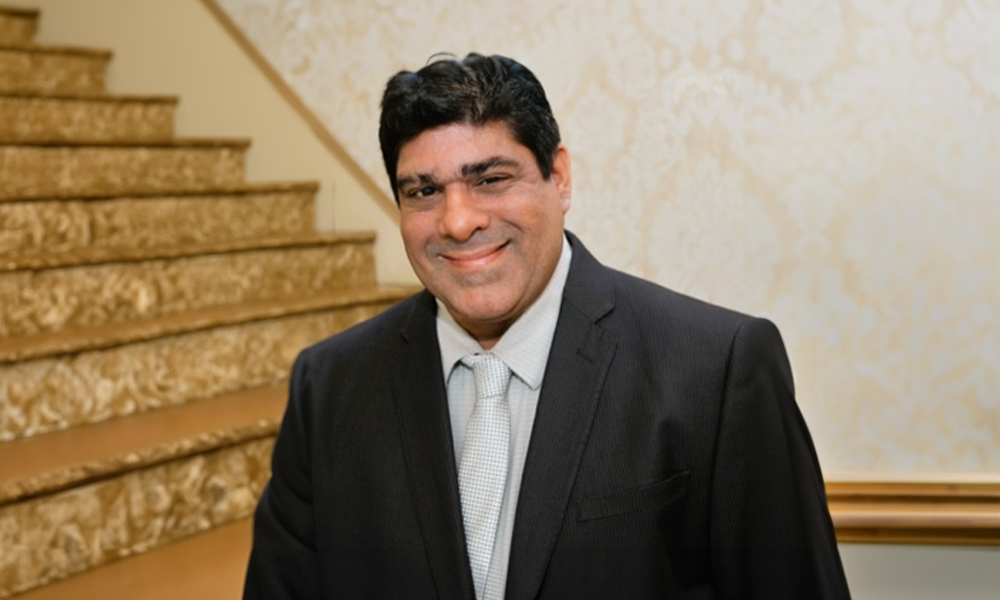More than half of Springfield residents said they expect the city’s economy to improve over the next five years, with the strongest optimism coming from supporters of the casino scheduled to open downtown in August, according to the latest survey from the Western New England University Polling Institute.
The telephone survey of 853 adults, conducted April 2-22, found that 59 percent expect Springfield’s economy to be much better or somewhat better five years from now. Twenty-seven percent predicted the local economy would stay about the same, while nine percent said the economy would get somewhat or much worse.
Levels of optimism were highest among survey respondents who said they support plans for MGM Resorts International’s casino, hotel, and restaurants. The survey found that 61 percent of residents back the casino project, while 26 percent are opposed. Among casino supporters, 67 percent said they expect the local economy to be much better or somewhat better five years from now, while 26 percent said it would stay the same and four percent said it would get somewhat worse. Among casino opponents, only 40 percent said they expect the local economy to get much or somewhat better in the next five years, while 33 percent said it would stay the same and 21 percent said it would get somewhat or much worse.
The Polling Institute measured views on the economy and the casino as part of a wide-ranging survey that also asked Springfield residents to assess the quality of life in their city overall and in their neighborhood in particular, as well as the current health of the city’s economy, the quality of the city’s public schools, and the effectiveness of the city’s efforts to fight crime. The survey, conducted by live interviewers in English and Spanish, has a margin of error of plus or minus 4.9 percent.
The Polling Institute asked many of the same questions in a survey of Springfield residents in February 2010, allowing for comparisons over time. On several of the metrics, residents’ views of the city have shifted in a positive direction from 2010 to 2018. Ratings for the city as a place to live improved from 2010 to 2018, as did the assessment of how well the city is doing in combating crime. Residents also were more likely to say the quality of life in Springfield has improved over the past five years in the 2018 survey compared to respondents in the 2010 survey. Assessments of the city’s neighborhoods as places to live, and the quality of the city’s public schools, did not change significantly from 2010 to 2018.
Tim Vercellotti, director of the Polling Institute and a professor of political science at Western New England University, said the latest survey results indicate Springfield residents have an increasingly favorable opinion of their city. “The data show that a growing percentage of residents view Springfield in positive terms, and they are optimistic about the city’s economic future,” he said.
When asked to rate Springfield overall as a place in which to live, 56 percent rated the city as excellent or good, compared to 44 percent in 2010. Forty-four percent rated the city as only fair or poor in 2018, compared to 54 percent in 2010.
Men were more likely than women to rate the city as an excellent or good place to live by a margin of 60 percent to 53 percent. Sixty percent of Hispanic residents rated the city as excellent or good, as did 58 percent of White Non-Hispanic residents and 49 percent of Black Non-Hispanic residents. The percent giving a positive rating increased with age, with 62 percent of residents ages 65 and older describing the city as an excellent or good place to live, compared to 53 percent of those ages 18 to 39. Positive ratings also increased with education level, with 67 percent of college graduates rating the city as excellent or good, compared to 51 percent of those with a high school diploma or less.
While a majority of respondents gave the city overall a positive rating, residents had even stronger preferences for their individual neighborhoods. Nearly three-quarters of those surveyed – 72 percent – rated their neighborhoods as excellent or good places in which to live. The percentages were not markedly different from neighborhood ratings in the 2010 survey, when 68 percent rated their neighborhoods as excellent or good.
When asked to state the most important problem facing Springfield today, respondents most frequently cited crime or public safety (41 percent); followed by drugs and the opioid epidemic (14 percent); and the economy, jobs, and poverty (nine percent). By comparison, 60 percent of respondents cited crime and public safety as the most important problem in 2010, followed by the economy, jobs, and poverty at 17 percent.
Ratings of the city in terms of fighting crime showed progress from 2010 to 2018. Forty-one percent of adults rated the city as excellent or good in terms of combating crime, compared to 28 percent in 2010. A majority of respondents – 56 percent – still view the city’s efforts as only fair or poor, but that proportion is down from 71 percent in 2010.
Women were more critical than men, with nearly two-thirds of women – 63 percent – rating the city as only fair or poor on fighting crime, compared to 51 percent of men. Sixty-seven percent of Black Non-Hispanic residents said the city was doing only a fair or poor job of combating crime, compared to 59 percent of Hispanic residents and 50 percent of White Non-Hispanic residents.
Assessments of the city’s public schools showed little change from 2010 to 2018. In the latest survey 40 percent of residents said the public schools were doing an excellent or good job, compared to 35 percent of residents in 2010. Fifty-three percent of residents rated the job the schools were doing as fair or poor in 2018, compared to 54 percent in 2010.
Residents offered a more negative view of the current local economy in Springfield, with 29 percent rating the economy as excellent or good, and 70 percent rating it as only fair or poor. Assessments of the economy differed sharply by race and ethnicity, with 76 percent of Hispanic residents and 74 percent of Black Non-Hispanic residents rating the economy as only fair or poor, compared to 61 percent of White Non-Hispanic residents. Younger respondents also were more likely to offer negative views, with 78 percent of 18- to 39-year-olds rating the local economy as only fair or poor, compared to 54 percent of respondents ages 65 and older.
When respondents were asked to rate Springfield as a place to live today compared to five years ago, 33 percent said the city was much better or somewhat better today, while 41 percent said Springfield was about the same, and 25 percent said the city was somewhat or much worse. Those figures represented improvement over 2010, when 23 percent of respondents said much or somewhat better, 31 percent said the same, and 44 percent said somewhat or much worse.
When asked to look to the future, 43 percent of survey respondents said Springfield would be a much or somewhat better place in which to live five years from now, with 27 percent saying the city would be the same, and 21 percent predicting the city would be somewhat or much worse. Those proportions were not substantially different from the 2010 survey results.
Views on the local economy and whether it would be better, worse or about the same five years from now were more bullish. Fifty-nine percent said much or somewhat better, while 27 percent said about the same and nine percent said somewhat or much worse. Men were more optimistic than women, with 65 percent of men predicting the local economy would get much or somewhat better, compared to 54 percent of women. Views also varied by race and ethnicity, with 65 percent of Hispanic respondents saying the economy would get much or somewhat better, compared to 56 percent of Black Non-Hispanic residents and 56 percent of White Non-Hispanic residents. Differences emerged based on length of time living in Springfield as well, with residents living here 10 years or less more likely to say the economy would get much or somewhat better (67 percent) compared to those who have lived here for more than 20 years (56 percent).
Views on the casino project were strongly related to opinions on the future economy of Springfield, with casino supporters being more likely to offer positive predictions. In terms of views about the casino project itself, men were more likely than women to support the project (66 percent to 57 percent), and support also was higher among younger residents and those who have lived in Springfield for 10 or fewer years.
After expressing their views on the casino project, survey respondents had an opportunity to state in their own words the top reason why they supported or opposed MGM’s plans. Among supporters, nearly two-thirds – 64 percent – pointed to the potential economic benefits of the project, while another 14 percent cited additional revenue for the city. Among those opposed to the casino project, the top reasons were the possibility that crime will increase downtown (40 percent), concerns about increased traffic downtown (10 percent), a belief that casinos cause or worsen gambling addictions (seven percent), that the project will siphon customers from existing businesses (seven percent), and that the project generally will be bad for the community (seven percent).
METHODOLOGY
The Western New England University Polling Institute conducted a telephone survey using live interviewers April 2 – 22, 2018. Western New England University sponsored and funded the study.The survey sample consists of telephone interviews in English or Spanish with 853 adults ages 18 and older drawn from Springfield using a combination of random-digit-dialing and listed phone numbers. Interviewers at the Polling Institute dialed household telephone numbers, known as “landline numbers,” and cell phone numbers using random samples obtained from Survey Sampling International of Shelton, CT. In order to draw a representative sample from the landline numbers, interviewers asked for the youngest adult male or the youngest adult female age 18 or older who was home at the time of the call. Interviewers dialing cell phone numbers interviewed the respondent who answered the cell phone after confirming three things: (1) that the respondent was in a safe setting to complete the survey; (2) that the respondent was age 18 or older; and (3) that the respondent was a resident of Springfield. The sample consists of 355 interviews completed on landlines and 498 interviews completed on cell phones. The landline and cell phone data were combined and weighted to reflect the adult population of Springfield by gender, race, ethnicity, age, and education level using U.S. Census estimates for Springfield. Complete results of the poll are available at http://www1.wne.edu/polling-institute/index.cfm.
All surveys are subject to sampling error, which is the expected probable difference between interviewing everyone in a population versus a scientific sampling drawn from that population. The margin of sampling error for a sample of 853 adults is +/- 4.9 percent at a 95 percent confidence interval. The margin of sampling error includes a design effect of 2.2 to reflect variability introduced by weighting the data. Thus if 50 percent of survey respondents rated Springfield as an excellent or good place in which to live, one would be 95 percent confident that the true figure would be between 45.1 percent and 54.9 percent (50 percent +/- 4.9 percent) had all adults in Springfield been interviewed, rather than just a sample. Sampling error increases as the sample size decreases, so statements based on various population subgroups are subject to more error than are statements based on the total sample. Sampling error does not take into account other sources of variation inherent in public opinion studies, such as non-response, question wording, or context effects.
Established in 2005, the Western New England University Polling Institute conducts research on issues of importance to Massachusetts and the region. The Institute provides the University’s faculty and students with opportunities to participate in public opinion research. The Institute is a charter member of the Transparency Initiative, sponsored by the American Association for Public Opinion Research. The Transparency Initiative supports greater openness in the reporting of survey research methodology. Additional information about the Polling Institute is available from Dr. Tim Vercellotti, director of the Polling Institute, at polling@wne.edu.





